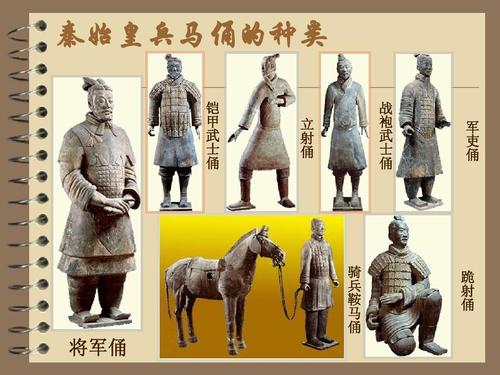
What are the ranks of the Terracotta Army?
The Terracotta Army is a vast collection of terracotta sculptures depicting the armies of Qin Shi Huang, the first emperor of China. The figures were buried with the emperor in 210–209 BCE, with the purpose of protecting him in his afterlife. The warriors of different ranks were buried in battle formation to represent a real army and are split into several distinct roles, each identifiable by their unique characteristics:
Infantrymen
The infantrymen make up the bulk of the Terracotta Army. They are typically depicted wearing light armor or no armor at all, armed with swords, spears, or crossbows. They are easily recognizable by their youthful appearance and lack of headwear, reflecting their lower status. Some infantrymen carried daggers or swords for close combat, showcasing the diverse fighting styles within this rank.
Archers
The archers are typically depicted kneeling or standing with their bows drawn, ready to fire. They are easily distinguished by their long, flowing robes and the quivers of arrows slung across their backs. Interestingly, the archers showcase a specialized stance, with their left foot slightly forward, hinting at their training for accuracy and power.
Generals
The generals are the highest-ranking officers in the Terracotta Army. They are easily recognizable by their elaborate armor, tall headdresses, and commanding postures. Their armor often features intricate designs and animal motifs, signifying their high status and authority. Some generals are depicted holding staffs or batons, symbolizing their leadership roles.
Cavalrymen
The cavalrymen are depicted riding horses and wearing light armor. They are armed with swords, spears, or crossbows and played a crucial role in flanking maneuvers and rapid assaults. Their horses are realistically sculpted, showcasing the importance of cavalry in ancient Chinese warfare.
Charioteers
The charioteers are depicted driving chariots and wearing heavy armor. They are typically armed with bows and arrows, and their chariots are drawn by two or four horses. Chariots, symbols of status and military might, were used for both offensive and defensive purposes on the battlefield.
Officers
Officers, holding a rank between generals and soldiers, are depicted with less elaborate armor than generals but with more ornate attire than regular soldiers. They often wear distinctive headgear and may carry batons or other symbols of authority. Their presence highlights the structured hierarchy within the Qin army.
Guards of Honour
Unlike the battle-ready soldiers, the guards of honour are adorned with more ceremonial attire. They were likely responsible for protecting the emperor's tomb and are characterized by their unique weapons and decorations. These figures showcase the importance placed on ritual and symbolism in Qin dynasty funerary practices.
Q&A
Q: Why were the Terracotta Army figures buried with the emperor? A: The Terracotta Army was buried with Emperor Qin Shi Huang to protect him in the afterlife and to serve him in the next world, as was the custom with earlier rulers.
Q: What is the significance of the different ranks in the Terracotta Army? A: The different ranks in the Terracotta Army reflect the strict hierarchy of the Qin army, as well as the specialized roles that each soldier played in battle.
Q: Are the figures in the Terracotta Army all identical? A: No, the figures in the Terracotta Army are not all identical. While they share certain stylistic elements, each figure is unique, with its own individual features, clothing, and accessories.